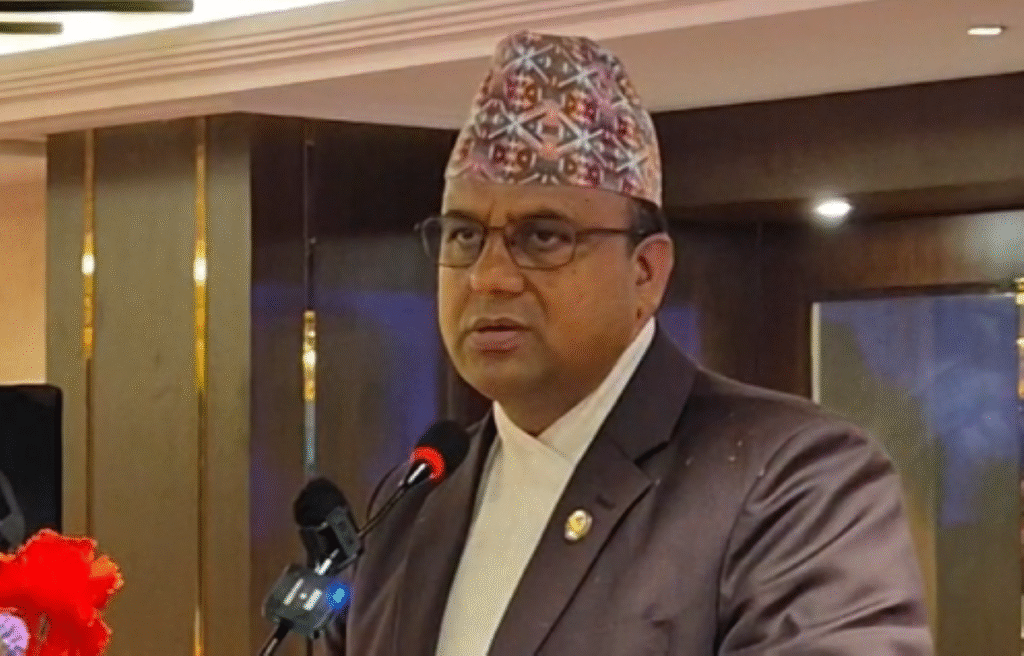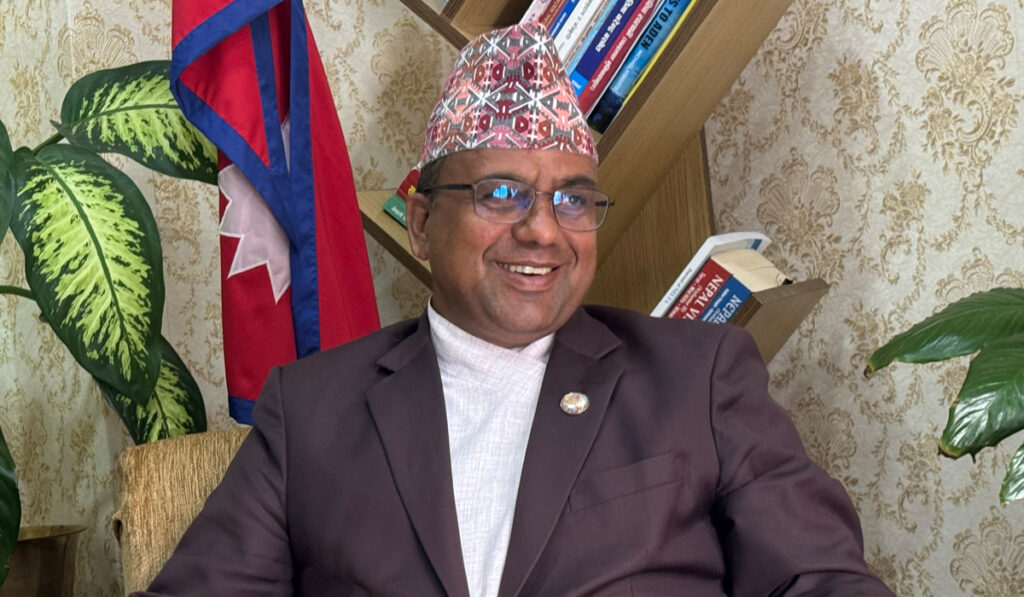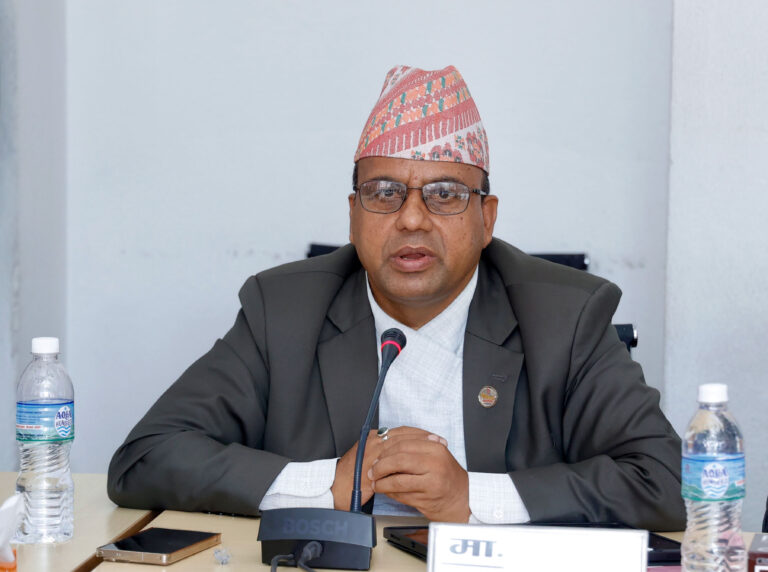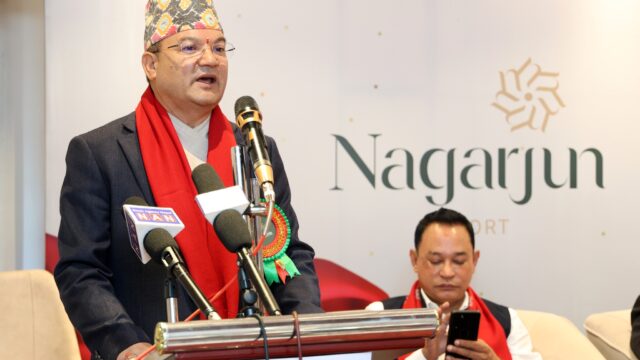Minister for Culture, Tourism and Civil Aviation, Badri Prasad Pandey, has reaffirmed the government’s dedication to preserving Nepal’s rich cultural and linguistic heritage, with particular attention to Kailali’s historic Garva Palace. During a session of the National Assembly held today, Minister Pandey addressed multiple concerns raised by lawmakers regarding efforts to conserve key heritage sites and foster cultural diversity across the country.
Garva Palace Listed as Archaeological Heritage
Minister Pandey informed the Assembly that the Garva Palace, located in Chure Rural Municipality-4 of Kailali district, has already been officially listed among Nepal’s archaeological heritage sites. This announcement came in response to a query by National Assembly member Madan Kumari Shah (Garima), who inquired about the government’s policies and programs related to the conservation of Garva Palace and tourism development in the neighboring Kanchanpur district.
“The Garva Palace is not just a historical monument, but a cultural symbol of the far-western region of Nepal. The government is committed to its preservation,” Minister Pandey said. He further explained that the Department of Archaeology has already conducted a field inspection at the site and is now preparing a detailed study report for further restoration and conservation work.

Budget Allocation for Documentation and Study
To ensure thorough documentation and structured restoration of the Garva Palace, the government has proposed a budget of Rs. 400,000 in the upcoming fiscal year 2082/83. According to Minister Pandey, this fund will be used to prepare a comprehensive report based on the findings from the site inspection. The detailed study will include architectural assessments, historical significance, and restoration feasibility, which are critical steps in preserving the palace and potentially turning it into a tourism hub in the far-western region.
“The proposed budget is a stepping stone in recognizing and conserving the palace for future generations. We are not only preserving a building but also safeguarding the cultural narrative it represents,” he added.
Responding to Concerns on Language and Cultural Promotion
In addition to heritage preservation, the session also touched upon Nepal’s commitment to linguistic and cultural diversity. Responding to concerns raised by National Assembly member Mohammed Khalid, Minister Pandey highlighted the government’s initiatives in this area, particularly under the framework provided by Nepal’s Constitution.
He pointed out that Article 6 of the Constitution of Nepal recognizes all mother tongues spoken within the country as national languages, and Article 287 provides for the establishment of a Language Commission tasked with their protection, promotion, and research.
“The Language Commission is actively working towards the documentation, preservation, and promotion of our diverse linguistic heritage,” Minister Pandey said. “This work ensures the cultural identities of our various ethnic groups remain alive and respected.”
Nepal’s Multilingual Landscape
Minister Pandey cited findings from the National Census of 2078 BS (2021), which revealed the presence of 124 different languages spoken throughout the country. Among these, 93 languages, approximately 75 percent, are spoken by indigenous communities. This linguistic variety is one of Nepal’s most unique cultural features and presents both an opportunity and a challenge in the realm of preservation and education.
He stressed that the government has been continuously working to document these languages, provide resources for their development, and promote their use in education and public life.
Cultural and Linguistic Diversity at the Heart of National Policy
Minister Pandey reaffirmed that the government’s cultural and tourism policies are grounded in the commitment to diversity and inclusiveness. He emphasized that language is not just a medium of communication, but also a carrier of culture, tradition, and history. Therefore, the protection of languages, especially those facing extinction, remains a national priority.
“Our policies are not just focused on promoting mainstream tourism but are equally dedicated to celebrating and conserving the rich cultural mosaic that defines Nepal,” he said.

Towards Integrated Tourism and Cultural Promotion
The government sees the conservation of historical monuments like Garva Palace as an integral part of promoting regional tourism. By protecting these sites, the government hopes to attract both domestic and international visitors, which in turn would contribute to the socio-economic development of remote and underdeveloped areas.
Tourism experts and cultural historians have long emphasized the potential of sites like Garva Palace to become part of a broader heritage tourism circuit in western Nepal, incorporating local traditions, crafts, and linguistic diversity.
Minister Pandey’s statement reflects the government’s multi-pronged approach to cultural development: one that includes tangible heritage such as Garva Palace and intangible assets like indigenous languages. With a clear policy direction, budget allocations, and dedicated institutional support through the Department of Archaeology and the Language Commission, the government aims to preserve Nepal’s cultural legacy for future generations.
As Nepal continues to move toward inclusive development, the preservation of its historical and cultural diversity stands not just as a national responsibility, but also as a beacon for sustainable tourism and community empowerment.






